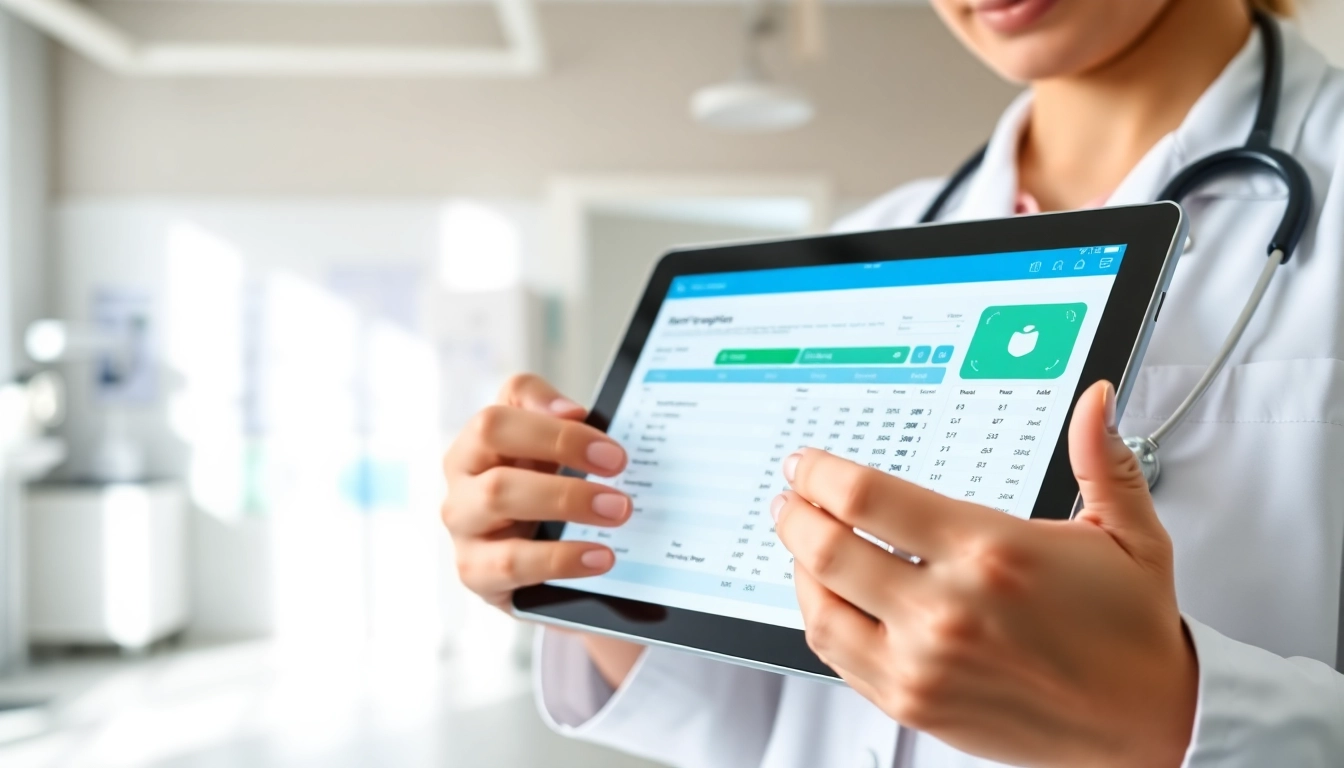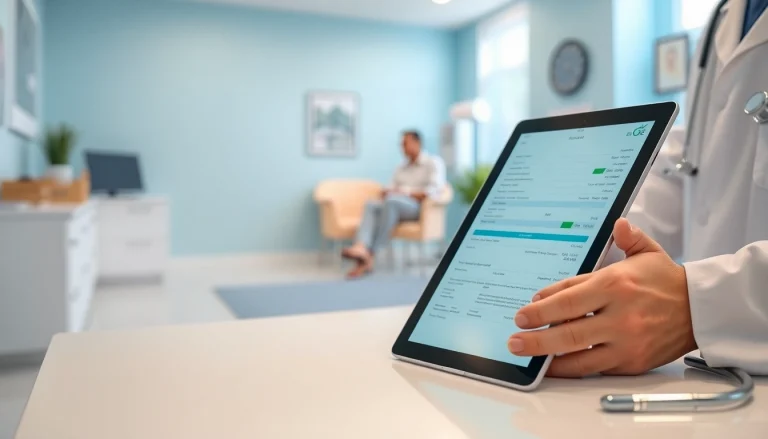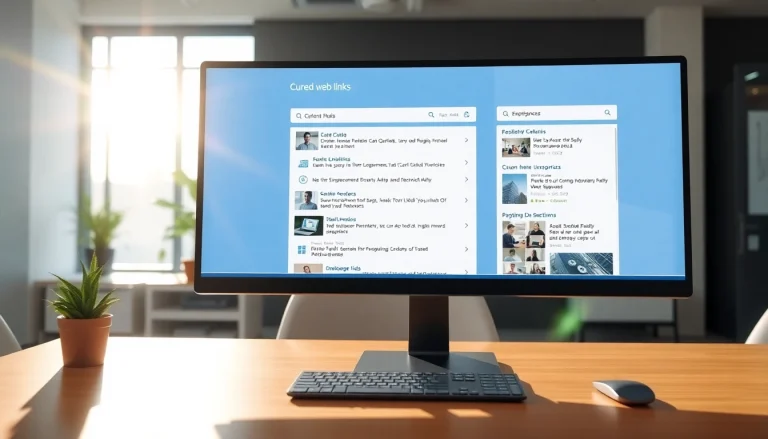Understanding Eprescription Solutions
The shift towards digital solutions in healthcare has become increasingly prevalent, with eprescription app reviews highlighting the effectiveness of such tools. Eprescription apps have emerged as critical components in enhancing prescription accuracy and streamlining the prescription process from healthcare providers to patients. This article will delve into the essence of these applications, exploring their features, benefits, and user experiences to provide comprehensive insights into how they can transform healthcare delivery.
What is an Eprescription App?
An eprescription app is a digital platform that allows healthcare professionals to create, send, and manage prescriptions electronically. These apps facilitate communication between doctors, pharmacists, and patients, reducing the potential for errors associated with traditional handwritten prescriptions. By automating the prescription process, these applications aim to enhance the efficiency of patient care, ensuring that medications are prescribed safely and promptly.
Key Features of Eprescription Apps
When evaluating different eprescription applications, several key features can distinguish an effective solution from a less efficient one. Here are some essential functions that many successful eprescription apps offer:
- Prescription Management: Users can easily create, revise, and send prescriptions without the hassle of physical paperwork.
- Medication Database: Access to extensive databases ensuring that clinicians can choose from an up-to-date list of medications.
- Patient History Integration: Automated access to a patient’s medical history, allowing for more informed prescribing decisions.
- Real-Time Communication: Secure messaging features enable quick consultations between doctors and pharmacists.
- Insurance Verification: Integration with insurance systems to verify coverage and co-pays automatically.
- Compliance Tracking: Monitoring tools to ensure patients are adhering to their prescribed treatments.
Essential Benefits for Healthcare Providers
The advantages of implementing an eprescription app extend beyond convenience; they play a significant role in improving care quality and operational efficiency. Some of the essential benefits include:
- Increased Accuracy: By eliminating handwriting errors, eprescription solutions significantly reduce the likelihood of errors in medication dispensing.
- Efficiency Gains: In addition to saving time for practitioners, automated workflows can significantly cut down the time required for completing prescriptions.
- Improved Patient Safety: Tight integration with pharmacy systems helps reduce the risk of adverse drug interactions and allergies.
- Cost Reduction: By streamlining office procedures and reducing paper usage, practices can enjoy lower operational costs.
- Enhanced Patient Experience: Providing timely and accurate prescriptions contributes to a more positive overall patient experience.
Navigating Eprescription App Reviews
Understanding the strengths and weaknesses of various eprescription apps can be enhanced by analyzing user reviews and industry evaluations. These reviews provide critical insights into user experiences and satisfaction levels.
Evaluating User Feedback and Ratings
When assessing an eprescription app, it is vital to look at user feedback and reviews. Factors to consider include:
- Overall Ratings: Most users provide star ratings that give a quick look into user satisfaction.
- Review Content: Reading through user comments can reveal common issues, features, and overall usability.
- Update Frequency: Regular updates may signal that the developers are responsive to user feedback and committed to improving the app.
Comparative Analysis of Popular Apps
While many eprescription apps are available, comparing a few popular options can help users identify which apps best align with their specific needs. Key parameters for comparison may include usability, feature sets, customer support, and integration capabilities. Emphasizing these aspects ensures that healthcare providers choose solutions tailored to their workflows and client needs.
What to Look for in Reviews
When researching eprescription app reviews, consider looking for the following aspects:
- User Experience: How intuitive is the app? Are there reports of users struggling with basic functionalities?
- Reliability and Uptime: User comments can provide insights into any performance issues experienced during peak times.
- Support Services: Are users satisfied with the level of support provided? Delays in obtaining assistance can pose serious challenges in practice.
Implementing Eprescription Apps in Practice
Once an appropriate eprescription application is selected, the next step is effective implementation. This section covers essential considerations for integrating these solutions into healthcare practices.
Steps to Integrate Eprescription Solutions
Successful integration of an eprescription system requires careful planning and execution. Here are vital steps to consider:
- Assessment of Needs: Evaluate the specific requirements of your practice, including workflow, software compatibility, and patient demographics.
- Stakeholder Involvement: Engage key personnel from different departments to ensure broad support and understanding of the new tool.
- System Installation: Collaborate with IT professionals to install the system and check for any compatibility issues with existing software.
- Testing Phase: Run tests to ensure all features work properly, allowing for troubleshooting before going live.
- Launch and Monitor: Deploy the solution and continuously monitor for issues, making adjustments as necessary based on user feedback.
Training Staff for Effective Use
Proper training is vital to ensure that all team members can effectively utilize the new eprescription app. Effective training strategies include:
- Hands-On Workshops: Conduct workshops that allow staff to navigate the app and practice common tasks.
- User Guides and Documentation: Create accessible resources that staff can reference as they get accustomed to the software.
- Feedback Sessions: Establish a feedback loop, where users can share their experiences and concerns, fueling ongoing training improvements.
Overcoming Common Implementation Challenges
Despite the clear advantages of eprescription apps, healthcare providers may encounter obstacles during implementation. Addressing these challenges effectively is crucial for a successful transition:
- Resistance to Change: Acknowledge that some staff members may resist transitioning to new technology. Foster an open environment that encourages discussions about concerns and benefits.
- Initial Technical Difficulties: Anticipate potential technical issues and prepare support resources to aid staff in troubleshooting.
- Integration Hurdles: Ensure compatibility with existing systems and data formats to prevent friction points in workflows.
Enhancing Patient Experience with Eprescription Apps
Patient satisfaction is foundational to effective healthcare delivery, and eprescription apps have a notable impact on the overall patient experience. Here’s how these applications can enhance care quality:
Streamlining Prescription Processes
One of the most significant benefits of eprescription applications is the ability to streamline the prescription process:
- Reduced Wait Times: Patients receive prescriptions faster, enabling them to start their treatments without unnecessary delays.
- Improved Access: Patients can easily view and manage their prescriptions, leading to improved medication adherence.
- Fewer Errors: Automated systems diminish the risk of miscommunication and prescription errors, which can lead to improved trust and confidence in healthcare providers.
Maximizing Patient Engagement and Compliance
Effective patient engagement strategies enabled by eprescription solutions can significantly enhance treatment outcomes:
- Transparent Communication: Patients receive automatic notifications regarding updates to their prescriptions, fostering a more transparent communication line with healthcare providers.
- Medication Reminders: Many apps integrate reminder features, helping patients adhere to their prescribed medications.
- Health Education Resources: Providing resources related to medications helps patients understand their treatment plans and encourages adherence.
Addressing Privacy and Security Concerns
As with any digital solution, privacy and security are significant concerns for both healthcare providers and patients. Eprescription apps implement various measures to protect sensitive information:
- Data Encryption: To safeguard patient data during transmission, high-level encryption protocols should be standard.
- Access Controls: Ensure that only authorized personnel can access patient prescriptions and sensitive information.
- Regular Security Audits: Conducting regular assessments of the systems can help identify vulnerabilities and strengthen defenses against breaches.
Future of Eprescription Technology
As technology continues to evolve, so too will the landscape of eprescribing. Keeping an eye on emerging trends can help healthcare providers stay ahead of the curve.
Emerging Trends in Eprescribing
The forefront of eprescribing technology is constantly advancing. Some trends to watch include:
- Artificial Intelligence: AI is beginning to assist in recommending medications based on patient history, thereby tailoring prescriptions more effectively.
- Telehealth Integrations: The rise of telemedicine is leading to greater integration of eprescribing solutions, allowing for seamless consultations and prescriptions.
- Blockchain Technology: The potential for enhanced security and accountability within prescription records is an exciting development on the horizon.
Potential Innovations to Watch For
Continuous innovation is integral to the development of eprescription applications. Future innovations may include:
- Smart Technologies: Integration with wearables and monitoring devices can enable real-time data sharing, improving treatment accuracy.
- Enhanced User Interfaces: Ongoing advancements in UI design will likely focus on creating even more intuitive applications.
- Personalized Medicine: Future applications might incorporate genetic information to optimize medication choices.
Impact of Legislation on Eprescribing
Legislative changes often drive enhancements in healthcare technology. Legislators and regulatory bodies are focusing on improving healthcare outcomes through digital means, which could affect:
- Increased Standards: Stricter regulatory frameworks may drive the adoption of more secure and efficient eprescribing practices.
- Reimbursement Models: New financial incentives could emerge for practices that successfully implement eprescribing technologies.
- Data Sharing Regulations: Future legislation might focus on enhancing the safe sharing of prescription data among providers, pharmacists, and patients.







